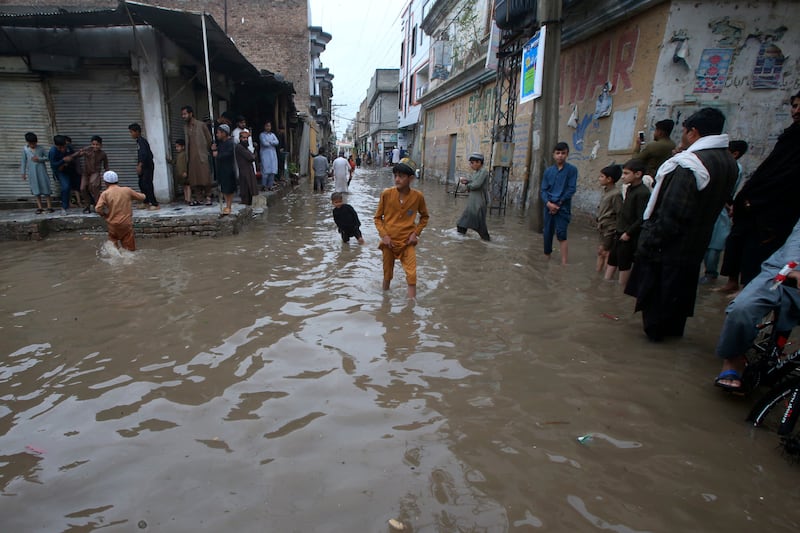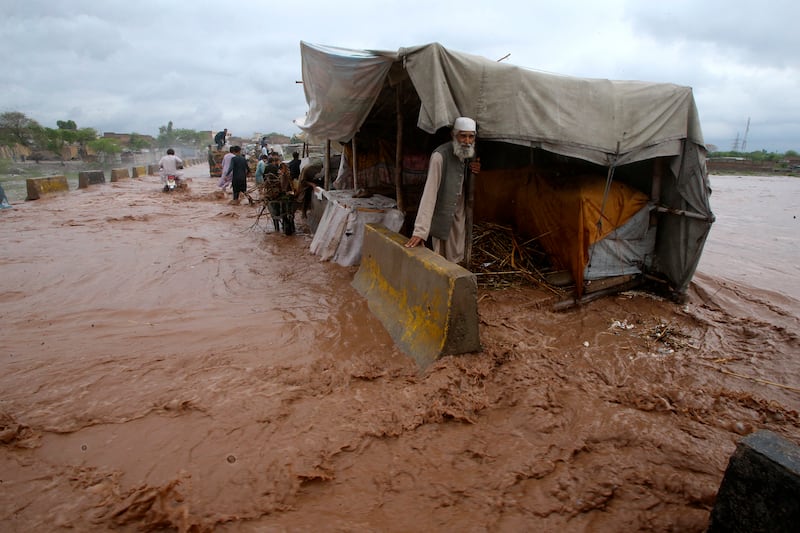Lightning and heavy rain have led to 14 deaths in Pakistan, officials said on Wednesday, taking the death toll from four days of extreme weather to at least 63.
Most of the deaths were reported in the north-western Khyber Pakhtunkhwa province.
Collapsing buildings have killed 32 people, including 15 children and five women, said Khursheed Anwar, a spokesman for the Disaster Management Authority.
Dozens more were also injured in the north-west, where 1,370 houses were damaged, he said.

The eastern province of Punjab has reported 21 lightning- and collapse-related deaths, while Baluchistan, in the country’s south-west, reported 10 dead as authorities declared a state of emergency following flash floods.
On Wednesday, Baluchistan was bracing for more rain amid ongoing rescue and relief operations.
Heavy rain also fell in the disputed Himalayan region of Kashmir.
Pakistan is seeing heavier rain in April due to climate change, said Zaheer Ahmed Babar, a senior official at the Pakistan Meteorological Department.
“So far there has been 256% above normal rainfall in Baluchistan,” he told the Associated Press.
“Overall, there has been 61% above normal rainfall this month across Pakistan, and it shows climate change has already happened in our country.”

In 2022, downpours swelled rivers and at one point flooded a third of Pakistan, killing 1,739 people. The floods also caused 30 billion US dollars (£24 billion) of damage, from which Pakistan is still trying to rebuild.
Meanwhile, the death toll in neighbouring Afghanistan rose to 70 after 37 more people died from various rain and flash flooding incidents in recent days, according to Abdullah Janan Saiq, the Taliban’s spokesman for the State Ministry for Natural Disaster Management.
Flash floods have also damaged 2,000 homes, three mosques, four schools and affected thousands of people who will need humanitarian assistance, he said.
Floods also damaged agricultural land and 2,500 animals have died from the deluges, he added.









